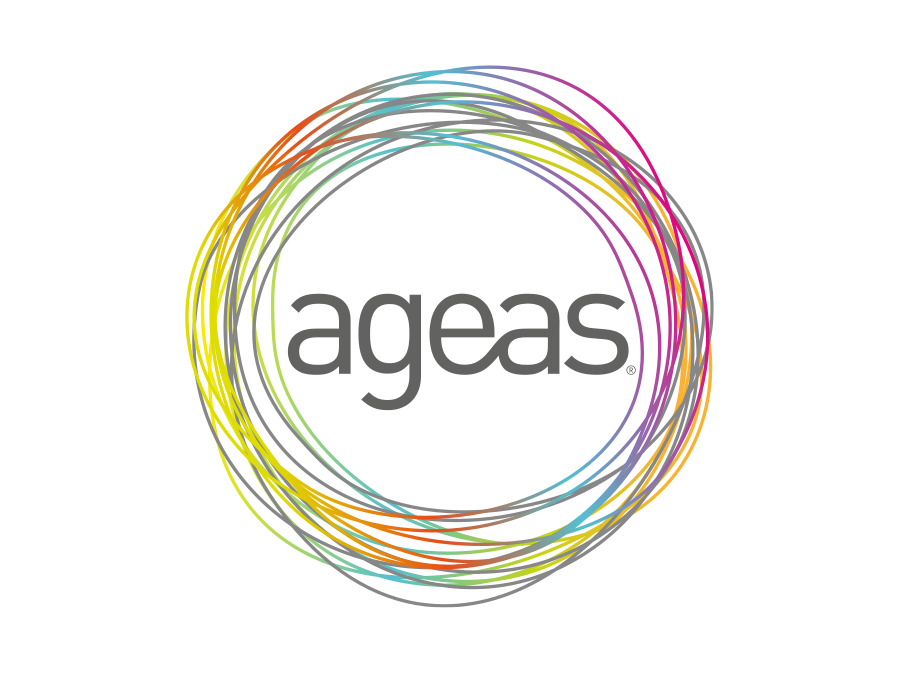UK NHS Delays £3.9M Lifetime Health Cost

UK 2025 Shock Over 1 in 4 Britons Face Escalating Health Costs & Lost Income Due to NHS Delays, Fueling a Staggering £3.9 Million+ Lifetime Financial Burden From Worsening Conditions, Unfunded Private Care & Eroding Family Futures – Is Your PMI & LCIIP Shield Your Essential Lifeline Against This Crisis?
A silent crisis is unfolding across the United Kingdom. It doesn't arrive with a sudden crash, but with the quiet, gnawing anxiety of a letter confirming a six-month wait for a scan, a year-long queue for surgery, or the inability to even get a GP appointment. By 2025, the strain on our cherished National Health Service has reached a breaking point, with staggering consequences not just for our health, but for our financial survival.
The stark reality is that prolonged NHS delays are no longer just an inconvenience; they are a direct catalyst for a personal financial catastrophe. New analysis reveals a shocking figure: a severe, long-term health event, exacerbated by treatment delays, could inflict a lifetime financial burden of over £3.9 million on a British family.
This isn't a remote possibility. With NHS waiting lists in England hovering around a record 7.7 million, and equivalent pressures in Scotland, Wales, and Northern Ireland, more than one in four adults are now directly or indirectly impacted. They are caught in a devastating triad of risk:
- Worsening Medical Conditions: Delays turn treatable issues into chronic, debilitating illnesses.
- Forced Private Healthcare: Millions are draining their life savings to pay for private care out of desperation.
- Catastrophic Lost Income: The inability to work while waiting for treatment destroys careers, savings, and future prosperity.
This article is not about criticising the heroic efforts of NHS staff. It is a vital guide for you, your family, and your financial future. We will dissect this £3.9 million figure, explore the real-world impact of healthcare delays, and demonstrate how a robust shield of Private Medical Insurance (PMI) and Life, Critical Illness & Income Protection (LCIIP) is no longer a luxury, but an essential lifeline in modern Britain.
The Unravelling Tapestry: Understanding the 2025 NHS Crisis
To grasp the scale of the financial risk, we must first understand the health crisis that fuels it. The NHS, the cornerstone of our society, is facing a perfect storm of unprecedented demand, historical backlogs, and resource constraints.
The numbers paint a grim picture. The British Medical Association (BMA) has repeatedly warned that the true waiting list, including the "hidden backlog" of people who haven't yet been referred, could be well over 10 million.
| Metric | 2019 (Pre-Pandemic) | 2023 | 2025 (Projected) | Impact | | --- | --- | --- | --- | | England Waiting List | 4.4 million | 7.7 million | 8.5 million+ | Unprecedented delays for routine & specialist care | | Longest Waits (18+ months) | ~1,600 | ~11,000 | >20,000 | Conditions worsen, leading to complex needs | | Cancer Target (62-day) | 78% met | 59% met | <55% met | Delayed diagnosis significantly impacts survival rates | | GP Satisfaction | High | Record Low | Continued Decline | Barrier to entry for diagnosis and referral |
Sources: NHS England, BMA analysis, The King's Fund projections.
What's driving this?
- Post-Pandemic Backlog: The monumental effort to fight COVID-19 meant pausing millions of non-urgent procedures, creating a bottleneck that the system is still struggling to clear.
- Workforce Shortages: The UK has fewer doctors and nurses per capita than many comparable nations. Burnout and retention issues are rife, stretching existing staff to their limits.
- An Ageing Population: We are living longer, but often with more complex, long-term health conditions that require ongoing NHS resources.
- Underfunding: Decades of funding increases that have failed to keep pace with demand and inflation have left the service with an aging infrastructure and limited capacity.
This isn't just about waiting for a new hip. It's about the woman waiting months for a gynaecology appointment, her condition worsening daily. It's the self-employed man whose back pain makes work impossible, waiting over a year for an MRI. It's the parent watching their child's mental health deteriorate on a CAMHS waiting list that stretches into years. This is the human reality behind the statistics, and it carries a devastating financial price tag.
Deconstructing the £3.9 Million Lifetime Financial Burden
How can a health issue possibly lead to a multi-million-pound financial loss? The figure is an aggregation of direct costs, lost opportunities, and the corrosive long-term impact on a family's financial trajectory. It represents a plausible, albeit severe, scenario for a mid-career professional couple where one partner suffers a serious, career-ending illness exacerbated by delays.
Let's break down the three core components.
1. The Escalating Cost of Worsening Conditions
Time is the most critical factor in medicine. A delay in diagnosis or treatment allows an illness to progress, often transforming a simple problem into a complex, life-altering one.
Consider a common musculoskeletal issue: a torn knee ligament for a 45-year-old.
| Scenario | NHS Pathway (with delays) | Private Pathway (with PMI) |
|---|---|---|
| Initial Consultation | 4-week wait for GP, 6-month wait for physio | Private GP within 48 hours, specialist next week |
| Diagnosis | 9-month wait for NHS MRI scan | Private MRI within days of specialist referral |
| Treatment | 12-18 month wait for keyhole surgery | Surgery scheduled within 2-4 weeks |
| Outcome | Muscle wastage, chronic pain, early arthritis | Full recovery, return to normal activity |
| Long-Term Cost | Need for future knee replacement, chronic pain medication, reduced mobility | Minimal long-term cost, good quality of life |
In the delayed scenario, the patient's condition deteriorates. The surgery becomes more complex, the recovery longer, and the risk of long-term complications like osteoarthritis skyrockets. The "cost" isn't just the initial treatment; it's the lifetime of pain medication, further surgeries, and adaptations needed to cope with a permanent disability—a disability that could have been avoided.
2. The Spiral of Unfunded Private Care
Faced with debilitating pain and the prospect of losing their livelihood, millions of Britons are making a desperate choice: to abandon the queue and pay for their own treatment. The self-pay market has exploded since 2020.
According to the Private Healthcare Information Network (PHIN), the number of people paying for their own treatment has surged by over 35%. But this comes at a tremendous cost, draining savings, investments, and even pension pots.
Average UK Private Procedure Costs (2025 Estimates):
| Procedure/Service | Average Cost | What it Buys |
|---|---|---|
| Specialist Consultation | £250 - £400 | An initial opinion and diagnosis plan |
| MRI Scan | £400 - £800 | A single diagnostic scan |
| Cataract Surgery (one eye) | £2,500 - £4,000 | Restores vision, often with a long NHS wait |
| Hip Replacement | £13,000 - £16,000 | A common procedure for older adults |
| Knee Replacement | £14,000 - £17,000 | Alleviates chronic pain and restores mobility |
| Cancer Treatment (Chemo) | £20,000 - £100,000+ | Per cycle/course, depending on the drugs used |
These figures are just the start. They often don't include the initial consultation, diagnostic tests, or crucial post-operative physiotherapy and follow-up care. A single episode of care for a serious condition can easily surpass £50,000, wiping out a lifetime of savings in a matter of months.
3. The Devastation of Lost Income & Eroding Futures
This is the largest and most destructive component of the £3.9 million figure. For most families, their ability to earn an income is their single biggest asset. A long-term illness, particularly one prolonged by waiting lists, shatters this asset completely.
Let's build a hypothetical but realistic scenario to illustrate the £3.9M+ figure.
The Case: A 40-Year-Old Marketing Director
- Income: £90,000 per year.
- The Event: Experiences neurological symptoms. Faces a 12-month wait for a neurologist and subsequent scans on the NHS.
- The Delay: During the wait, her condition worsens, eventually diagnosed as Multiple Sclerosis (MS). The delay means the disease is more advanced, and she is unable to continue in her high-pressure job. She has to stop working at 41.
The Financial Fallout (Lifetime Calculation):
-
Lost Gross Earnings:
- 24 years of lost income (age 41 to 65) @ £90,000/year = £2,160,000
- This doesn't even account for promotions or inflation.
-
Lost Pension Contributions:
- Losing out on 10% employer/employee pension contributions on that income.
- This amounts to £9,000 per year. Over 24 years, with a conservative 5% compound growth, this lost pension pot is worth over £410,000.
-
Direct Private Healthcare & Adaptation Costs:
- Initial diagnostic rush (private scans, consultations): £5,000
- Specialist treatments and drugs not available on the NHS over 25 years: £150,000
- Home adaptations (stairlift, wet room, etc.): £40,000
- Specialist equipment and ongoing private physio: £75,000
- Total Direct Costs: £270,000
-
Impact on Partner's Income:
- Her partner, also a high earner (£80,000/year), has to reduce hours to become a part-time carer.
- A 40% reduction in income (£32,000/year) for 15 years = £480,000 in lost earnings.
- The knock-on effect on the partner's pension is another £200,000+.
-
Lost Investment Potential & Eroding Future:
- The couple can no longer save or invest. They have to live off their capital.
- The opportunity cost of not being able to invest, say, £15,000 a year for 20 years with 6% growth is a staggering £550,000.
Total Lifetime Financial Burden: £2,160,000 (Lost Income) + £410,000 (Lost Pension) + £270,000 (Health Costs) + £480,000 (Partner's Lost Income) + £200,000 (Partner's Lost Pension) + £550,000 (Lost Investment Growth) = £4,070,000.
This shocking total demonstrates how a single health crisis, made worse by delays, can completely derail a family's financial future, turning aspirations of a comfortable retirement into a struggle for survival.
Your Financial Lifeline: A Deep Dive into the LCIIP & PMI Shield
If the scenario above is the problem, then a comprehensive personal protection strategy is the solution. It is a non-negotiable part of modern financial planning. This shield has three core components that work together to protect you from different angles of the crisis.
1. Private Medical Insurance (PMI): Your Fast-Track to Treatment
PMI is your key to bypassing the queue. Its primary function is to cover the costs of private diagnosis and treatment for acute conditions. In the context of the current crisis, its value has never been higher.
How PMI Protects You:
- Speed of Access: See a GP, get a referral, and be seen by a specialist in days or weeks, not months or years.
- Choice and Control: Choose your specialist, hospital, and when you receive your treatment, fitting it around your life and work.
- Access to Advanced Treatments: Some policies provide access to drugs and treatments not yet approved for widespread NHS use due to cost.
- Comfort and Privacy: Receive treatment in a private hospital with your own room, offering a more comfortable and less stressful environment for recovery.
Let's revisit our earlier example of a knee injury, this time comparing the journey with and without insurance.
| Stage | NHS Journey | Journey with PMI | Financial Impact |
|---|---|---|---|
| Symptom Onset | Pain, inability to work | Pain, inability to work | Lost income begins |
| Diagnosis | 9-12 month wait for scan | Scan within 1 week | PMI saves 11+ months of lost income |
| Treatment | 12-18 month wait for surgery | Surgery within 4 weeks | PMI saves 17+ months of lost income |
| Recovery | Slower due to muscle loss | Faster, more effective | Return to work months, even years, earlier |
PMI directly tackles two parts of the financial burden: the cost of private care (by paying for it) and the loss of income (by dramatically shortening the time you are unwell and unable to work).
2. Critical Illness Cover (CIC): Your Financial Shock Absorber
What if you're diagnosed with a major illness like cancer, a heart attack, or a stroke? This is where Critical Illness Cover provides a crucial financial cushion.
CIC is a policy that pays out a tax-free lump sum upon the diagnosis of a specified list of serious conditions. This money is yours to use however you see fit, providing immediate financial relief at the most stressful time of your life.
How a CIC Payout Can Be Used:
- Pay for Private Treatment: Use the funds to pay for care if your PMI has limits or if you want treatment abroad.
- Clear a Mortgage: Removing your largest monthly outgoing provides immense peace of mind for your entire family.
- Replace Lost Income: The lump sum can replace your salary for a year or more, allowing you to focus purely on recovery without financial worry.
- Adapt Your Home: Pay for necessary modifications, like a wheelchair ramp or wet room, without touching your savings.
- Fund a Less Stressful Life: Allow your partner to take time off work to support you, or pay for extra childcare.
A £200,000 CIC payout can completely change the narrative of a serious diagnosis. It turns a story of financial panic into one of empowerment and choice.
3. Income Protection (IP): The Bedrock of Your Financial Security
Often described by financial experts as the most important insurance policy of all, Income Protection is the one that protects your single biggest asset: your monthly pay cheque.
While CIC provides a one-off lump sum, IP pays a regular, recurring monthly income if you are unable to work due to any illness or injury. It continues to pay out until you can return to work, your policy term ends, or you retire.
Key Features of Income Protection:
- The Deferment Period: This is the time you wait from when you stop working to when the payments start. It can be tailored from 4 weeks to 12 months to align with your employer's sick pay or your savings. A longer deferment period means a lower premium.
- Level of Cover: You can typically cover 50-70% of your gross salary, providing enough to meet your essential outgoings. This income is tax-free.
- 'Own Occupation' Definition: This is the gold standard. It means the policy will pay out if you are unable to perform your specific job. A surgeon with a hand tremor could claim, even if they were able to work in a different role.
Income Protection is the ultimate defence against the long-term income loss we calculated in our £3.9 million scenario. Had the Marketing Director held an IP policy, she would have received a monthly income of around £4,500 (£54,000 a year, tax-free) from the moment her sick pay ended, potentially right up until her retirement age. This alone would have prevented over £2 million of the financial devastation.
Real-Life Scenarios: How Insurance Makes the Difference
Let's apply this three-pronged shield to real-world situations.
Scenario 1: David, the 38-year-old Self-Employed Plumber
- The Problem: Develops severe, chronic back pain. His GP suspects a slipped disc but the NHS waiting list for an MRI is 9 months, and for potential surgery, it's 18 months. He cannot work, and his income immediately drops to zero. His business and family's home are at risk.
- The Insurance Solution:
- PMI: David uses his policy. He sees a private orthopaedic consultant in five days, gets an MRI the following week, and has spinal surgery three weeks later.
- Income Protection: After his 4-week deferment period, his IP policy kicks in, paying him £2,800 a month. This covers his mortgage and bills while he undergoes surgery and a 3-month recovery.
- The Outcome: Instead of 18+ months of pain and financial ruin, David is back on his feet and earning again in four months. His business is saved. His insurance shield cost him £110 a month but saved him from bankruptcy.
Scenario 2: Chloe, the 46-year-old Headteacher and Mother of Two
- The Problem: Diagnosed with breast cancer. While the NHS cancer pathway is prioritised, she still faces waits for certain scans and a choice of standard treatments. The emotional and physical toll makes continuing her demanding job impossible.
- The Insurance Solution:
- Critical Illness Cover: Her £250,000 policy pays out within weeks of diagnosis.
- The Outcome: The payout immediately clears their £180,000 mortgage. The remaining £70,000 is used to fund a sabbatical for her husband, pay for extra childcare, and access specialist psychological support and nutritional therapy to aid her recovery. The financial pressure is completely removed, allowing the whole family to focus on her treatment and wellbeing.
Navigating Your Options: How to Choose the Right Cover
The world of PMI, CIC, and IP can seem complex. Policies have different definitions, exclusions, and price points. Choosing the right combination for your specific needs is paramount, and attempting to do it alone can lead to costly mistakes or inadequate cover.
This is where working with an expert, independent broker is not just advisable, but essential. A specialist broker like WeCovr doesn't work for a single insurance company; we work for you. Our role is to understand your life—your job, your health, your family's needs, and your budget—and then search the entire market to find the most suitable and cost-effective protection.
At WeCovr, we analyse policies from all the UK's leading insurers, including Aviva, Bupa, Legal & General, and Vitality. We translate the jargon and compare the crucial details, ensuring the cover you get is the cover you actually need. We handle the paperwork and make the process seamless.
Furthermore, we believe that protecting your health goes beyond just insurance. It's about proactive wellbeing. That's why, as part of our commitment to our clients' long-term health, WeCovr provides complimentary access to our exclusive AI-powered calorie and nutrition tracking app, CalorieHero. It's a small way we can help you stay on top of your health every single day, reinforcing the protection we put in place for the unexpected.
Securing Your Future in an Uncertain World
The Great British healthcare compact has changed. While the NHS remains a source of national pride and provides incredible care every day, the reality of 2025 is that it can no longer guarantee timely access for all. The resulting delays are not just a health risk; they are a clear and present danger to your financial stability.
Relying solely on the state is a gamble that a growing number of families are losing, with devastating consequences. The potential £3.9 million lifetime cost of a serious illness is a stark warning that personal responsibility in financial planning has never been more critical.
Taking control is not complex. It involves creating a personal health and finance shield with three essential layers:
- Private Medical Insurance (PMI) to bypass queues and get treated fast.
- Critical Illness Cover (CIC) to provide a capital injection to absorb financial shocks.
- Income Protection (IP) to safeguard your monthly income, the engine of your financial life.
Don't wait for a diagnosis letter to reveal the gaps in your financial defences. The time to act is now. By investing a small fraction of your monthly income in a comprehensive protection plan, you are not just buying an insurance policy; you are buying certainty, choice, and control. You are securing your family’s future against the biggest risks we now face.
Why life insurance and how does it work?
What is Life Insurance?
Life insurance is an insurance policy that can provide financial support for your loved ones when you or your joint policy holder passes away. It can help clear any outstanding debts, such as a mortgage, and cover your family's living and other expenses such costs of education, so your family can continue to pay bills and living expenses. In addition to life insurance, insurance providers offer related products such as income protection and critical illness, which we will touch upon below.How does it work?
Life insurance pays out if you die. The payout can be in the form of a lump sum payment or can be paid as a replacement for a regular income. It's your decision how much cover you'd like to take based on your financial resources and how much you'd like to leave to your family to help them deal with any outstanding debts and living expenses. Your premium depends on a number of factors, including your occupation, health and other criteria.The payout amount can change over time or can be fixed. A level term or whole of life policy offers a fixed payout. A decreasing term policy offers a payout that decreases over the term of the cover.
With critical illness policies, a payout is made if you’re diagnosed with a terminal illness with a remaining life expectancy of less than 12 months. While income protection policies ensure you can continue to meet your financial commitments if you are forced to take an extended break from work. If you can’t work because you’ve had an accident, fallen sick, or lost your job through no fault of your own, income protection insurance pays you an agreed portion of your salary each month.
Income protection is particularly helpful for people in dangerous occupations who want to be sure their mortgage will always be covered. Income protection only covers events beyond your control: you’re much less likely to be covered if you’re fired from your job or if you injure yourself deliberately.
Questions to ask yourself regarding life insurance
Just ask yourself:👉 Who would pay your mortgage or rent if you were to pass away or fall seriously ill?
👉 Who would pay for your family’s food, clothing, study fees or lifestyle?
👉 Who would provide for the costs of your funeral or clear your debts?
👉 Who would pay for your costs if you're unable to work due to serious illness or disability?
Many families don’t realise that life, income protection and critical illness insurance is one of the most effective ways to protect their finances. A great insurance policy can cover costs, protect a family from inheriting debts and even pay off a mortgage.
Many would think that the costs for all the benefits provided by life insurance, income protection insurance or critical illness insurance are too high, but the great news is in the current market policies are actually very inexpensive.
Benefits offered by income protection, life and critical illness insurance
Life insurance, income protection and critical illness insurance are indispensable for every family because a child loses a parent every 22 minutes in the UK, while every single day tragically 60 people suffer major injuries on the UK roads. Some people become unable to work because of sickness or disability.Life insurance cover pays out a lump sum to your family, loved ones or whomever you choose to get the money. This can be used to secure the financial future of your loved ones meaning they would not have to struggle financially in the event of your death.
If it's a critical illness cover, the payout happens sooner - upon diagnosis of a serious illness, disability or medical condition, easing the financial hardship such an event inevitably brings.
Income protection insurance can be very important for anyone who relies on a pay check to cover their living costs, but it's especially important if you’re self-employed or own a small business, where your employment and income is a bit less stable. It pays a regular income if you can't work because of sickness or disability and continues until you return to paid work or you retire.
In a world where 1 in 4 of us would struggle financially after just four weeks without work, the stark reality hits hard – a mere 7% of UK adults possess the vital shield of income protection. The urgency of safeguarding our financial well-being has never been more palpable.
Let's face it – relying on savings isn't a solution for everyone. Almost 25% of people have no savings at all, and a whopping 50% have £1,000 or less tucked away. Even more concerning, 51% of Brits – that's a huge 27 million people – wouldn't last more than one month living off their savings. That's a 10% increase from 2022.
And don't even think about state benefits being a safety net. The maximum you can expect from statutory sick pay is a mere £109.40 per week for up to 28 weeks. Not exactly a financial lifeline, right?
Now, let's tackle a common objection: "But I have critical illness insurance. I don't need income protection too." Here's the deal – the two policies apply to very different situations. In a nutshell:
- Critical illness insurance pays a single lump sum if you're diagnosed with or undergo surgery for a specified potentially life-threatening illness. It's great for handling big one-off expenses or debts.
- Income protection, on the other hand, pays a percentage of your salary as a regular payment if you can't work due to illness or injury. It's the superhero that tackles those relentless monthly bills.
Types of life insurance policies
Common reasons for getting a life insurance policy are to:✅ Leave behind an amount of money to keep your family comfortable
✅ Protect the family home and pay off the mortgage in full or in part
✅ Pay for funeral costs
Starting from as little as a couple of pounds per week, you can do all that with a Life Policy.
Level Term Life Insurance
One of the simplest forms of life insurance, level term life insurance works by selecting a length of time for which you would want to be covered and then deciding how much you would like your loved ones to receive should the worst happen. Should your life insurance policy pay out to your family, it would be in a lump sum amount that can be used in whatever way the beneficiary may wish.
Decreasing Term Life Insurance
Decreasing term life insurance works in the same way as level term, except the lump sum payment amount upon death decreases with time. The common use for decreasing term life cover is to protect against mortgage repayment as the lump sum decreases along with the principal of the mortgage itself.
Increasing Term Life Insurance
Increasing term life insurance aims to pay out a cash sum growing each year if the worst happens while covered by the policy. With increasing term life cover amount insured increases annually by a fixed amount for the length of the policy. This can protect your policy's value against inflation, which could be advantageous if you’re looking to maintain your loved ones’ living standards, continue paying off your mortgage in line with its repayment schedule and cover your children’s education fees.
Whole of Life Insurance
Whereas term life insurance policies only pay out if you pass away during their term, whole of life insurance pays out to your beneficiaries whenever this should happen. The most common uses for whole life insurance are to cover the costs of a funeral or as a vehicle for your family's inheritance tax planning.
Family Income Benefit
Family income benefit is a somewhat lesser-known product in the family of life insurance products. Paying out a set amount every month of year to your beneficiaries, it is the most cost-effective way of maintaining your family's living standards to an age where you'd expect them to be able to support themselves financially. The most common use would be for a family with children who are not working yet so are unable to take care of themselves financially.
Relevant Life Insurance
Relevant Life Insurance is a tax-efficient policy for a director or single employee. A simple level term life insurance product, it is placed in a specific trust to ensure its tax efficiency. The premiums are tax deductible and any benefit payable should a claim arise is also paid out tax free, which makes it an attractive product for entrepreneurs and their businesses.
Important Fact!
We can look at a more suitable option mid-term!
Why is it important to get life insurance early?
👉 Many people are very thankful that they had their life, income protection, and critical illness insurance cover in place before running into some serious issues. Critical illness and income protection insurance is as important as life insurance for protecting your family's finances.👉 We insure our cars, houses, bicycles and even bags! Yet our life and health are the most precious things we have.
Easily one of the most important insurance purchases an individual or family can make in their lifetime, the decision to buy life, income protection, critical illness and private medical health insurance can be made much simpler with the help of FCA-authorised advisers. They are the specialists who do the searching and analysis helping people choose between various types of life insurance policies available in the market, including income protection, critical illness and other types of policies most suitable to the client's individual circumstances.
It certainly won't do any harm if you speak with one of our experienced FCA-authorised insurance partner experts who are passionate about advising people on financial matters related to life insurance and are keen to provide you with a free consultation.
You can discuss with them in detail what affordable life, income protection, critical illness or private medical health insurance plan for the necessary peace of mind they would recommend! WeCovr works with some of the best advisers in the market.
By tapping the button below, you can book a free call with them in less than 30 seconds right now:
Our Group Is Proud To Have Issued 750,000+ Policies!
We've established collaboration agreements with leading insurance groups to create tailored coverage
























How It Works
1. Complete a brief form

2. Our experts analyse your information and find you best quotes

3. Enjoy your protection!

Any questions?
Learn more

Who Are WeCovr?
WeCovr is an insurance specialist for people valuing their peace of mind and a great service.👍 WeCovr will help you get your private medical insurance, life insurance, critical illness insurance and others in no time thanks to our wonderful super-friendly experts ready to assist you every step of the way.
Just a quick and simple form and an easy conversation with one of our experts and your valuable insurance policy is in place for that needed peace of mind!